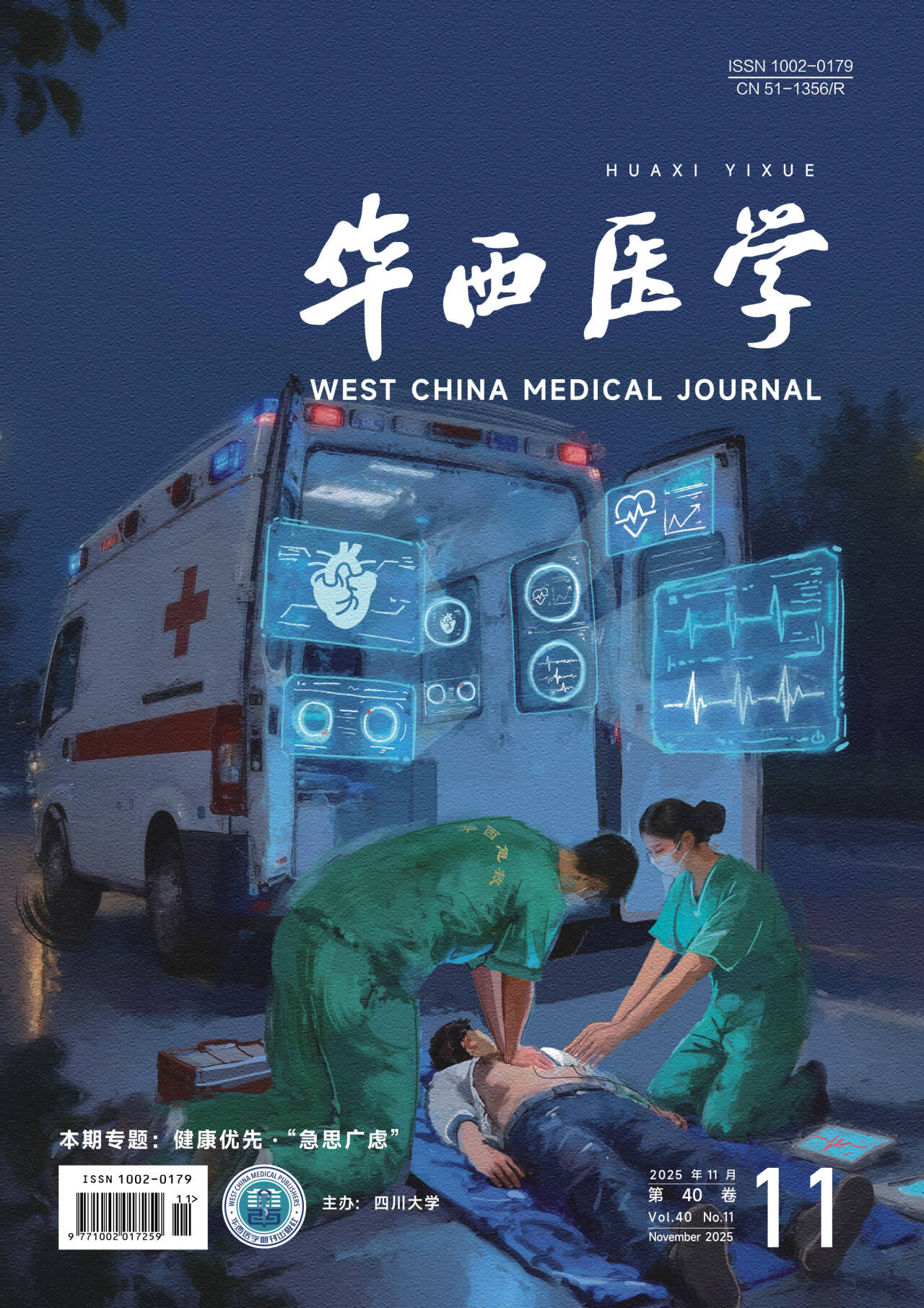【摘要】 目的 探討脊柱外科手術患者術后發生譫妄的危險因素和有效防治措施。 方法 2007年1月-2009年10月應用ICU譫妄診斷的意識狀態評估法觀察1 835例脊柱外科術后患者。對于發生術后譫妄的患者隨機分為治療組和未治療組,治療組于譫妄診斷明確時即靜脈注射氟哌利多5 mg。 結果 術后3 d,136例發生譫妄,譫妄發生率為7.41%。篩選出術后譫妄的可能高危因素包括高齡、術前合并高血壓、術前合并糖尿病、術中出血量 gt;600 mL、手術時間 gt;4 h、術中應用激素、術后電解質紊亂和低氧血癥、術后疼痛。發生譫妄的患者中,治療組(68例)住院時間短于未治療組(68例),差異有統計學意義(P lt;0.05)。 結論 高齡,術前合并高血壓、糖尿病,術中出血量 gt;600 mL,手術時間 gt;4 h,術中應用激素,術后電解質紊亂、低氧血癥及疼痛是脊柱外科手術患者術后發生譫妄的主要高危因素。氟哌利多治療術后譫妄有效。
【Abstract】 Objective To analyze the related factors influencing postoperative phrenitis in patients who have undergone spine surgery. Methods Postoperative phrenitis was evaluated with the confusion assessment method for the intensive care unit in 1 835 patients underwent spine surgery between January 2007 and October 2009. All the patients with postoperative phrenitis were randomly divided into two groups: treatment group and control group. The patients in treatment group underwent intravenous injection with droperidol (5 mg). Results Three days after the operation, 136 patients were diagnosed with postoperative phrenitis. The pre-operative complications of hypertension and diabetes, hemorrhage amount ( gt;600 mL) during the operation, operative time ( gt;4 hours), hormone usage during the operation, postoperative electrolyte disturbances, hyoxemia and pain were the factors influencing the morbidity of postoperative phrenitis. The length of hospital stay was shorter in the treatment group than that in the control group (P lt;0.05). Conclusions Senility, pre-operative complications of hypertension and diabetes, hemorrhage amount ( gt;600 mL) during the operation, operative time ( gt;4 hours), hormone usage during the operation, postoperative electrolyte disturbances, hyoxemia and pain were the factors influencing the morbidity of postoperative phrenitis. Droperidol is effective on postoperative phrenitis.
Citation: SUN Tianwei,YU Bin,LI Huinan,LU Shouliang,ZHANG Hang,ZHANG Xueli. Clinical analysis on Phrenitis after Spine Surgery. West China Medical Journal, 2011, 26(12): 1828-1831. doi: Copy
Copyright ? the editorial department of West China Medical Journal of West China Medical Publisher. All rights reserved




